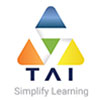In this SAS Training, you’ll become an expert in analytics techniques using the SAS data science tool. You’ll learn how to apply data manipulation and optimization techniques; advanced statistical concepts like clustering, linear regression and decision trees; data analysis methods to solve real world business problems and predictive modeling techniques. This SAS course will give you practical knowledge you can apply on your next data analysis job.
About Data Sciences with SAS
Course Content
Lesson 1: Analytics Overview
Definition of Analytics
Types of Analytics
Analytics Problem Types
Widely used tools and analytical techniques
Lesson 2: SAS Introduction
Introduction of GUI
Library statement, understanding of PDV
Import / Export of Data
Variable Attributes
Basic Procedures
Lesson 3: Combining/Modifying Datasets
Combining Data Sets Methods
Concatenation
Interleaving
One to One Reading
One to One Merging
Data Manipulation steps and tools
SAS Functions and Procedures for Data Manipulations
Lesson 4: PROC SQL
Introduction and Advantages
Options and Syntax – Understanding of Select Statement
Joins in SQL
Merge v/s Join
Lesson 5: SAS Macros
Need for SAS Macros
Macro Variables
Automatic Macro Variables
User-defined Macro Variables
Macro Functions
SYMBOLGEN System Option
SQL Clauses for Macros
The %Macro Statement
Lesson 6: Basic Statistics
Descriptive Statistics
Inferential Statistics
Hypothesis testing
Non parametric tests
Lesson 7: Basic Statistical Procedures
PROC UNIVARIATE
PROC MEANS
PROC FREQ
PROC CORR
PROC REG
PROC ANOVA
Lesson 8: Data Exploration
Data Preparation
Data Type Conversion
Missing Value Treatment
Summarizing Data
Lesson 9: Advanced Statistical Techniques
Clustering
Introduction
Clustering Methodology
Data Preparation
K Means Clustering
Cluster Profiling
Decision Trees
Introduction
Creating Decision Trees
Linear Regression
Introduction
Linear Regression in SAS
Diagnostics
Logistic Regression
Introduction
Logistic Regression in SAS
Diagnostics
Lesson 10: Working with Time series Data
Reading Simple Time Series
Dating time series and working with SAS date and date time values
Sub setting data and selecting observations
Storing time series data in SAS data sets
Plotting, transforming, transposing, interpolating
Lesson 11: Data Optimization using SAS
Data Optimization
Creating optimization models commonly used in industry
Formulating and solving a data envelopment analysis
Solving optimization problems using the OPTMODEL procedure in SAS
Call Now- +91-921-276-0556


